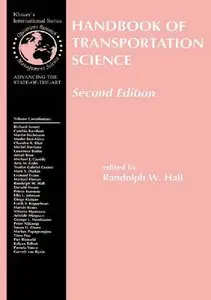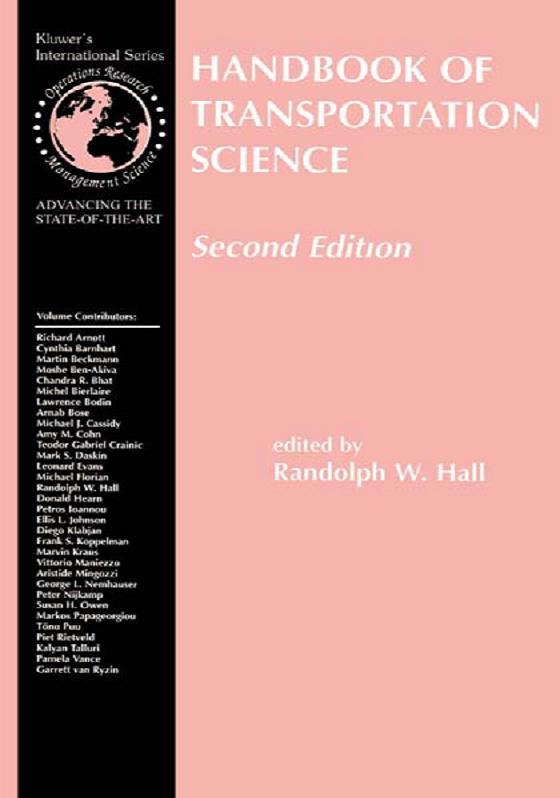Randolph W. Hall, "Handbook of Transportation Science"
Springer | 2003 | ISBN: 1402072465 | 752 pages | PDF | 13,7 MB
Springer | 2003 | ISBN: 1402072465 | 752 pages | PDF | 13,7 MB
Over the past thirty-five years, a substantial amount of theoretical and empirical scholarly research has been developed across the discipline domains of Transportation. This research has been synthesized into a systematic handbook that examines the scientific concepts, methods, and principles of this growing and evolving field. The Handbook of Transportation Science outlines the field of transportation as a scientific discipline that transcends transportation technology and methods. Whether by car, truck, airplane - or by a mode of transportation that has not yet been conceived - transportation obeys fundamental properties. The science of transportation defines these properties, and demonstrates how our knowledge of one mode of transportation can be used to explain the behavior of another. Transportation scientists are motivated by the desire to explain spatial interactions that result in movement of people or objects from place to place. Its methodologies draw from physics, operations research, probability and control theory.
The eighteen chapters in the Second Edition of the Handbook of Transportation Science are written by the leading researchers in Transportation Science as a continual effort to explore the scientific nature and state-of-the-art of the field. As such, it is directed to all the research and practitioner domains of transportation. It has been expanded from the first edition through the addition of four chapters. Chapter 15 extends the networks section of the book by addressing supply chains, distribution networks and logistics. While the emphasis is on freight transportation, the principles for network design extend to other applications, such as public economics. Chapter 16 through 18 fall in a new section on transportation economics. Chapter 16 addresses revenue management, a relatively recent topic in transportation, which has had substantial impact on the airline industry in particular. Chapter 17 presents spatial interaction models, which provides a mechanism for analyzing patterns of development. Chapter 18 provides the principles of transportation economics, with emphasis on pricing and public policy. In addition to the new chapters, the original chapters have been updated and revised.
Download
Not all books on AvaxHome appear on the homepage.
In order not to miss many of them follow ebooks section (see top of each page on AH)
and visit my blog too :)
In order not to miss many of them follow ebooks section (see top of each page on AH)
and visit my blog too :)
NO MIRRORS according to the rules



